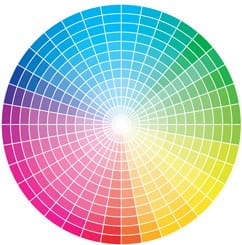The Design Process

There are five distinct stages to the design process. This may vary for particular projects or design disciplines. This information may be useful when working with a designer to understand the processes involved. Before the project is started however, a vital question has to be asked: ‘Why do you need a new identity, brochure, video or website etc?’ This question is the key to undertaking a successful design project.
Stage One. Research, strategy or feasibility
I collect all available information relevant to the project. This could include a written brief, background material, studying existing branding, legal issues plus any new research necessary for the project. I like to ask many questions at this stage in order to understand the client’s expectations.
Without asking the right questions, design erodes to nothing more than decoration. Decoration’s nice… in your house and on your office walls. But decoration isn’t the best for your marketing materials. You can do better.
The key questions are:
- Why are we doing this? What problem are we trying to solve or what opportunity are we trying to capture?
- What specific outcome are we looking for and how will we know when we have achieved this?
- What (if anything) can get in the way of our success and what can we do to mitigate that risk?
At this stage I believe it’s a good time to look at the competition and their approach and figure a way to gain the advantage.
The information is analysed and an initial proposal developed that reflects my understanding of the project that covers the objectives, feasibility, budget forecast and general direction. Sometimes an estimate is all that’s needed as long as everything is made as clear as possible to the client so that there are no surprises.
My goal is to keep my clients well informed each step of the way. It helps to avoid those little things that may become big headaches.
I might require the services of writers, photographers, printers, programmers or signage experts depending on the project. I have a great group of reliable people who I have worked with in the past. I would need to collate prices from all the individuals involved.
Stage Two. Design concepts
When the initial proposal has been accepted and everyone agrees on the details, preliminary design ideas are developed. This is where the creative process is given free reign within all the constraints established in Stage One.
Considerations may be colour combinations, typography, graphic style, keywords and technology. I might end up with a lot of visuals – some concepts work and some don’t. The ones that make most sense are refined and assessed as to the practicality of development. I also like to move away from them for a day if possible to see them with ‘fresh eyes’. I generally only present three concepts to my clients for review, usually in pdf format.
Client feedback and discussion result in the preferred concept being chosen for Stage Three development. Approximate costings for implementation are also calculated at this stage.
Stage Three. Detailed design development
The selected concept is worked up with all details implemented. Variations may be developed as well as further mock-ups. A logo would be created with subtle variations, different colours, fonts etc. A website’s various pages would be assembled in Photoshop and sample pages created in html to experience the onscreen effect. A brochure might have photographs commissioned or purchased from a library which would need selection and approval.
This stage can seem a bit random but it really depends on the item being designed. The important point to bear in mind is that this is an organic process and details can be changed if necessary. A detailed specification of the design for production planning and final costing would also be created at this point.

Stage Four. Implementation
After Stage Three approval, finished artwork is produced as required. For print this usually involves the creation of print-ready pdfs and detailed specifications are also created for outside suppliers. For websites, my designs are converted into code such as WordPress.
Stage Five. Supervision of production
Quality control is important so I prefer to oversee production myself through to completion. In the case of print it usually just means checking printer’s proofs although the pdf system is very reliable.
If the design is for a website I can suggest the best way to choose a website name if needed, sort out your hosting and show you how search engine optimisation is vital and how I can implement it in my designs. Websites are also tested on various browsers with Google sitemaps and analytics implemented.
Summary
I’ve tried to avoid jargon here and keep it all simple. The process is basically the same for all design disciplines but I do like to keep the system flexible as projects are as different as clients’ needs. Look through samples of graphic design in my design portfolio to see what I mean. If you have any particular questions or there’s something you don’t understand, please get in touch.
